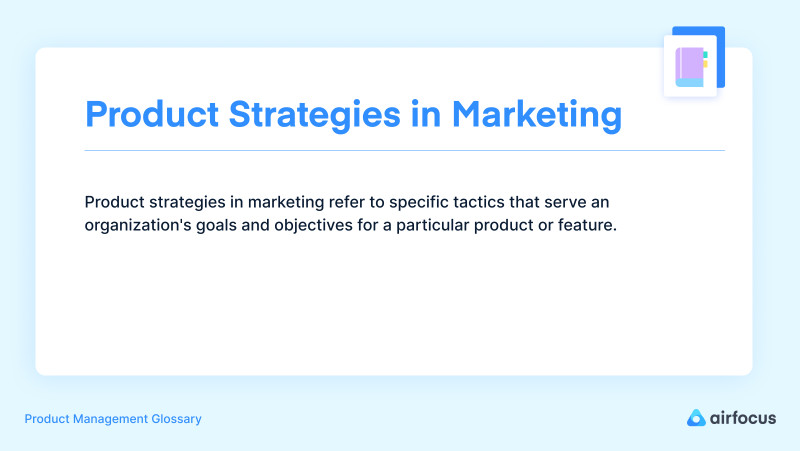Product Strategies in Marketing
What are product strategies in marketing?
Product strategies in marketing definition
Product strategies in marketing refer to specific tactics that serve an organization's goals and objectives for a particular product or feature.
A robust product strategy guides the product's ideation, creation, and launch, providing an end-to-end framework that different teams can leverage to stay on target. Below we’ll expand on several marketing-focused product strategies a company can include in its overarching strategy.
Target audience
The target audience is a constant whether we’re talking about marketing in isolation or in the context of product strategy. A product strategy without a target audience is like a road trip without a map or GPS — it provides context and direction to the entire enterprise.
In short, your target audience informs the need or problem that your product will fulfill or solve. They are the users to whom you’ll market your product and form the basis of all user acquisition activity.
Keyword research
To accurately reach your target audience, knowing where and how to find them is essential. Among the ever-growing list of targeting methods in digital marketing, one of the most well-known and well-utilized is keyword research — especially in the context of search ads.
When developing product strategies in marketing, it’s important to conduct keyword research to identify the words and phrases that best describe your product and where it fits in the market. While keywords may not come into play until after the product is launched, they offer a valuable touchstone during development to ensure all departments understand the product’s positioning.
Product descriptions
While often overlooked in the larger context of marketing, product descriptions can play a crucial role in the longer-term product strategy by providing a clear understanding of the product's features, benefits, and unique selling points.
A well-crafted product description can help an organization differentiate its product from competitors, attract that all-important target audience, and boost long-term user acquisition. This is particularly true in the tech and SaaS space, where digital products can face fierce competition in the market. Sometimes a catchy product description is enough to tip the balance in your favor.
Landing pages
Landing pages really are the bread and butter of any effective digital marketing strategy — and that should be reflected in the product strategy, too.
One part sales pitch and another part product explainer, a landing page does a lot of the heavy lifting when it comes to selling a product once it’s launched. A finely honed landing page will clearly explain the product’s unique selling point, detail the available pricing models, outline any tiered subscription options, and perhaps even showcase a direct comparison to competing products.
Robust product strategies in marketing should include multiple landing pages and a plan for multi-variate testing to ensure peak performance when it comes to delivering new users.
Content marketing
As the old saying goes, content is king — and that holds true for product strategy, too.
In truth, product marketing and content marketing are two sides of the same coin. The goal is the same — to attract new users and boost revenue. This is achieved by publishing genuinely valuable articles, whitepapers, one-pagers, videos, and other multimedia assets. This content should speak to the target audience's pain points while also educating them about the industry and the role of the product in the market.
Social media
Social media is another vital ingredient of great product strategy marketing. It allows companies to establish a strong brand presence, engage with their target audience, and share valuable content related to core products.
It also helps organizations gather near-instant feedback from their users, which can, in turn, inform product development and refine the ongoing product strategy. This can quickly become a positive feedback loop that encourages continuous product improvement.
Analytics
As with any digital product, analytics can be crucial for product strategy. Analytics provide empirical data about exactly how users interact with products.
This data can be hugely valuable because it enables organizations to make truly data-driven decisions that align with users’ needs and preferences. This results in a product that delights users with features they genuinely want and need.

General FAQ

Glossary categories
Create effective product strategy

Experience the new way of doing product management








